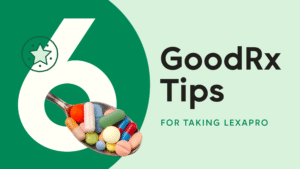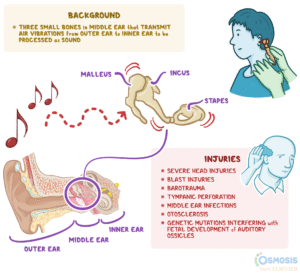Osteopenia vs. Osteoporosis_ What Are the Differences_
Osteopenia vs. Osteoporosis: Key Differences Explained
Read Time: 9 minutes
Osteopenia and osteoporosis are terms often used interchangeably, but they refer to different stages of bone health deterioration. While both conditions involve a reduction in bone mass and density, understanding their differences is crucial for prevention and management. This article delves into the distinctions between osteopenia and osteoporosis, including their causes, diagnosis, treatment options, and preventive measures.
What Are Osteopenia and Osteoporosis?
Both osteopenia and osteoporosis stem from bone mass loss, a process that occurs naturally as people age. The word “osteo” is derived from the Greek word for bone, “osteon,” and these two conditions refer to stages in the progression of weakened bones. Osteopenia is an early stage of bone loss, often seen as a precursor to osteoporosis, a more severe form of bone deterioration.
Bone Density and the Aging Process
As individuals age, bone mass tends to decrease, with bones becoming less dense and more fragile. This natural process of bone remodeling can lead to conditions like osteopenia and osteoporosis when the bones become increasingly susceptible to fractures. Osteopenia represents the early stage of this bone thinning, while osteoporosis involves more severe bone loss.
Symptoms of Osteopenia and Osteoporosis
The primary issue with both osteopenia and osteoporosis is that they often do not present any noticeable symptoms until a fracture occurs. Individuals may not realize they have these conditions until they suffer from a broken bone, which may happen even after a minor fall or injury. Fractures typically occur in the spine, hips, or wrists, with spinal fractures being the most common in those with low bone density.
Causes of Low Bone Density
Several factors contribute to the development of low bone mass, including:
-
Age: Bone density naturally decreases with age, especially after 50.
-
Genetics: A family history of osteoporosis or low bone density increases the risk.
-
Body type: Smaller, lighter body frames are more prone to bone loss.
-
Dietary factors: Poor nutrition, including inadequate calcium intake, can impair bone health.
-
Hormonal changes: Reduced estrogen levels in women (especially postmenopausal women) and low testosterone levels in men contribute to bone loss.
-
Medications: Long-term use of certain medications, like steroids or anti-seizure drugs, can negatively affect bone density.
Epidemiology of Osteoporosis
The incidence of osteoporosis varies by gender, with women being at a higher risk, especially after menopause. According to a study by the National Institutes of Health, approximately 4% of men over 50 and 19% of women over 50 in the United States have osteoporosis, primarily affecting the femur and lower spine.
Diagnosing Osteopenia and Osteoporosis
The most reliable way to diagnose osteopenia or osteoporosis is through a bone mineral density (BMD) test, typically performed using a DEXA (dual-energy X-ray absorptiometry) scan. This scan measures the mineral content of bones, helping to assess bone density and determine the stage of bone loss.
-
A T-score of -1.0 or higher is considered normal.
-
A T-score between -1.0 and -2.5 indicates osteopenia.
-
A T-score of -2.5 or lower signifies osteoporosis.
-
A diagnosis of severe osteoporosis is made when the T-score is below -2.5 and there has been at least one bone fracture.
Treatment Options for Osteopenia and Osteoporosis
While osteoporosis was once seen as an inevitable part of aging, advancements in medical treatment now offer options for managing bone health. Treatment typically starts with lifestyle changes to improve bone strength, such as dietary adjustments (increased calcium and vitamin D intake) and weight-bearing exercises. For those with more severe bone loss, medication may be prescribed.
Common treatment options include:
-
Bisphosphonates: Drugs like alendronate (Fosamax) and risedronate (Actonel) help slow bone loss.
-
Hormone therapy: Estrogen replacement therapy can help reduce bone density loss in postmenopausal women.
-
Monoclonal antibodies: Drugs like Prolia (denosumab) are used for severe cases of osteoporosis.
-
Parathyroid hormone analogs: Medications like Forteo (teriparatide) stimulate bone formation.
Prevention: Reducing the Risk of Osteopenia and Osteoporosis
While some risk factors, like age and genetics, cannot be controlled, there are several lifestyle changes individuals can make to help preserve bone health and reduce the risk of bone loss:
-
Maintain a diet rich in calcium and vitamin D to support bone strength.
-
Engage in regular weight-bearing exercises such as walking, running, or strength training to stimulate bone formation.
-
Avoid smoking and limit alcohol consumption, both of which can contribute to bone loss.
-
Monitor your medications, and consult with a doctor about the long-term impact of any drugs that might affect bone density.
Key Takeaways
-
Osteopenia and osteoporosis are conditions of low bone mass, with osteopenia being an early stage and osteoporosis a more severe condition.
-
Both conditions are typically symptomless until a fracture occurs, often in the spine, hips, or wrists.
-
Bone mineral density tests, such as a DEXA scan, are used to diagnose these conditions and differentiate between osteopenia and osteoporosis.
-
Treatment involves lifestyle changes, including diet and exercise, along with medications for those with severe bone loss.
-
Preventive measures, such as calcium supplementation and regular physical activity, can help preserve bone health.
By understanding the differences between osteopenia and osteoporosis, individuals can take proactive steps toward managing their bone health and preventing fractures in the future.
Expert Tips
-
Incorporate seasonal foods into your diet to keep meals interesting while boosting bone health.
-
Try time-saving techniques for preparing meals, especially if you have a busy schedule, while still prioritizing bone-healthy nutrients.
Join Our Community
Want more health tips and insights? Subscribe to our newsletter for weekly updates on bone health and wellness.





